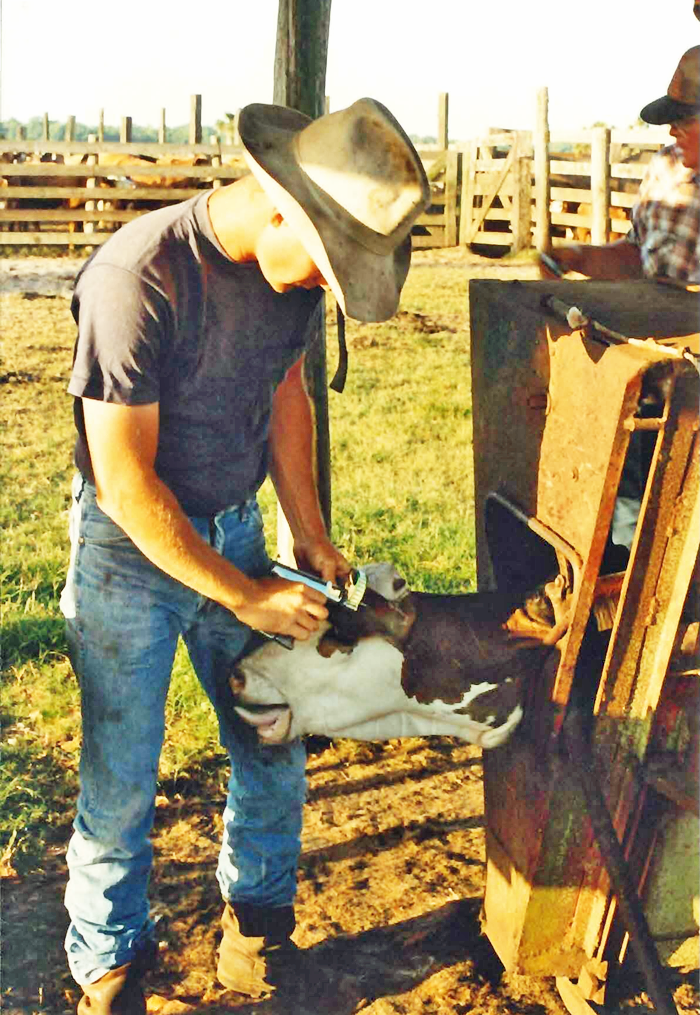Paul Beck, Oklahoma State University Extension Beef Nutrition Specialist

Implanting your beef calves before weaning will increase weaning weights of both steers and heifers and provide returns of $25 to 30 for each dollar invested in implants. Photo: Doug Mayo, UF/IFAS
Implanting preweaning is one of the most cost-effective ways to increase production for the cow calf producer. Implants are typically administered when the calves are between two months and four months of age. Research shows that implants given during the suckling phase will increase average daily gain of steer calves by approximately 0.10 pound per day. The increase in gains by implanting heifers is slightly better at 0.12 pounds per day. Implanting heifer calves at birth decreases pregnancy rate of replacement heifers by 30 to 50%, but implanting heifers between 1 and 3 months of age does not affect pregnancy rate later in life.
Most calf implants are designed to last 120 days. Calves should be 30 days to 45 days old before they are implanted, refer to manufactures label for approved timing. Bull calves intended for breeding should not be implanted. Bull calves not intended for breeding should be castrated at the time of implanting because implants impact scrotal development, which makes later castration more difficult.
Many producers follow the practice of leaving bull calves intact until weaning rather than castrating them at an early age. Jokingly known as the “Oklahoma Implant” in other beef producing areas, the idea is that natural hormones produced in the testicles increases ADG and weaning weight of the calves. Numerous research trials have shown that implanted steer calves gain weight faster and wean heavier than bull calves. This is because bull calves have very little testosterone production until they reach puberty at a much later age than normal weaning.
The stress of castration at weaning reduces post-weaning gain potential and the calf’s ability to withstand diseases typically associated with weaning and marketing. This difference in post-weaning performance of bulls versus steers is recognized by cattle buyers, as indicated by the $5 to $10 per cwt premium for steers over intact bull calves. Producers wanting to maximize the value of male calves at weaning should consider early castration at birth or at two months to four months of age and use an implant approved for nursing calves.
Implanting your calves before weaning is cost effective and will increase weaning weights of both steers and heifers with very little impact on reproduction rates of replacement heifers. There are several products labeled for use in pre-weaned calves, using the right product at the right time can provide returns of $25 to 30 for each dollar invested in implants, this will help pay for increases production costs we are facing this year.
–
For more information, use the following publication links:
–
Implants and Their Use in Beef Cattle Production (Oklahoma State)
–
Implants for Cow-Calf and Stocker Beef Cattle (UF/IFAS)
- Federal Estate Tax and Gift Tax Limits Announced For 2026 - December 19, 2025
- Why Do I Have So Many Open Cows? Causes of Reproductive Failure - December 19, 2025
- Wiregrass Cotton Expo Offers Resources, Research, & Real Solutions for Growers in Southeast – January 22 - December 19, 2025
